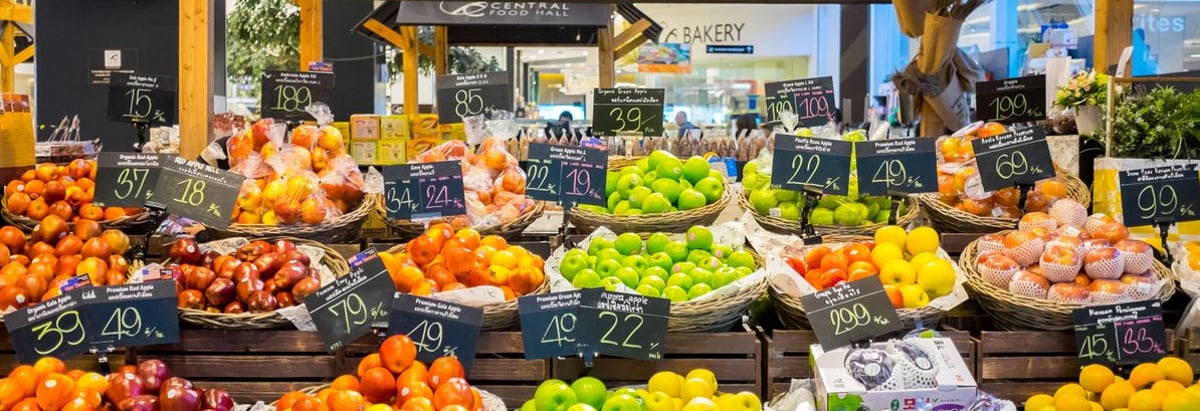- Finland
- /
- Food and Staples Retail
- /
- HLSE:KESKOB
Kesko Oyj (HEL:KESKOB) On An Uptrend: Could Fundamentals Be Driving The Stock?

Most readers would already know that Kesko Oyj's (HEL:KESKOB) stock increased by 9.2% over the past three months. Given that stock prices are usually aligned with a company's financial performance in the long-term, we decided to investigate if the company's decent financials had a hand to play in the recent price move. Particularly, we will be paying attention to Kesko Oyj's ROE today.
Return on equity or ROE is an important factor to be considered by a shareholder because it tells them how effectively their capital is being reinvested. In other words, it is a profitability ratio which measures the rate of return on the capital provided by the company's shareholders.
How To Calculate Return On Equity?
The formula for ROE is:
Return on Equity = Net Profit (from continuing operations) ÷ Shareholders' Equity
So, based on the above formula, the ROE for Kesko Oyj is:
15% = €368m ÷ €2.5b (Based on the trailing twelve months to March 2025).
The 'return' is the amount earned after tax over the last twelve months. One way to conceptualize this is that for each €1 of shareholders' capital it has, the company made €0.15 in profit.
See our latest analysis for Kesko Oyj
What Has ROE Got To Do With Earnings Growth?
We have already established that ROE serves as an efficient profit-generating gauge for a company's future earnings. Based on how much of its profits the company chooses to reinvest or "retain", we are then able to evaluate a company's future ability to generate profits. Assuming all else is equal, companies that have both a higher return on equity and higher profit retention are usually the ones that have a higher growth rate when compared to companies that don't have the same features.
Kesko Oyj's Earnings Growth And 15% ROE
To start with, Kesko Oyj's ROE looks acceptable. Further, the company's ROE compares quite favorably to the industry average of 11%. Despite this, Kesko Oyj's five year net income growth was quite flat over the past five years. We reckon that there could be some other factors at play here that's limiting the company's growth. These include low earnings retention or poor allocation of capital.
As a next step, we compared Kesko Oyj's net income growth with the industry and were disappointed to see that the company's growth is lower than the industry average growth of 16% in the same period.

The basis for attaching value to a company is, to a great extent, tied to its earnings growth. The investor should try to establish if the expected growth or decline in earnings, whichever the case may be, is priced in. Doing so will help them establish if the stock's future looks promising or ominous. One good indicator of expected earnings growth is the P/E ratio which determines the price the market is willing to pay for a stock based on its earnings prospects. So, you may want to check if Kesko Oyj is trading on a high P/E or a low P/E, relative to its industry.
Is Kesko Oyj Making Efficient Use Of Its Profits?
With a high three-year median payout ratio of 82% (implying that the company keeps only 18% of its income) of its business to reinvest into its business), most of Kesko Oyj's profits are being paid to shareholders, which explains the absence of growth in earnings.
In addition, Kesko Oyj has been paying dividends over a period of at least ten years suggesting that keeping up dividend payments is way more important to the management even if it comes at the cost of business growth. Based on the latest analysts' estimates, we found that the company's future payout ratio over the next three years is expected to hold steady at 80%. Still, forecasts suggest that Kesko Oyj's future ROE will rise to 18% even though the the company's payout ratio is not expected to change by much.

Summary
On the whole, we do feel that Kesko Oyj has some positive attributes. However, while the company does have a high ROE, its earnings growth number is quite disappointing. This can be blamed on the fact that it reinvests only a small portion of its profits and pays out the rest as dividends. Having said that, looking at the current analyst estimates, we found that the company's earnings are expected to gain momentum. Are these analysts expectations based on the broad expectations for the industry, or on the company's fundamentals? Click here to be taken to our analyst's forecasts page for the company.
Valuation is complex, but we're here to simplify it.
Discover if Kesko Oyj might be undervalued or overvalued with our detailed analysis, featuring fair value estimates, potential risks, dividends, insider trades, and its financial condition.
Access Free AnalysisHave feedback on this article? Concerned about the content? Get in touch with us directly. Alternatively, email editorial-team (at) simplywallst.com.
This article by Simply Wall St is general in nature. We provide commentary based on historical data and analyst forecasts only using an unbiased methodology and our articles are not intended to be financial advice. It does not constitute a recommendation to buy or sell any stock, and does not take account of your objectives, or your financial situation. We aim to bring you long-term focused analysis driven by fundamental data. Note that our analysis may not factor in the latest price-sensitive company announcements or qualitative material. Simply Wall St has no position in any stocks mentioned.
About HLSE:KESKOB
Kesko Oyj
Engages in the chain operations in Finland, Sweden, Norway, Estonia, Latvia, Lithuania, Denmark, and Poland.
Moderate growth potential second-rate dividend payer.
Similar Companies
Market Insights
Community Narratives



